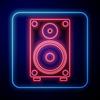How to Create Ambient and EDM Music?
Creating music is an art form that combines creativity with technology. In today's digital age, two popular music genres, ambient and EDM, are paving the way for new sounds and experiences. Whether you're inspired to create atmospheric soundscapes or heart-pumping beats, this guide will help you understand the fundamental components of making both ambient and EDM music.
Understanding Ambient Music
Ambient music is known for its emphasis on creating a mood or atmosphere through sound rather than traditional musical structure. This genre often features textures and layers of sound rather than sharp rhythms and melodies. It's perfect for background music, meditation, or enhancing an environment.
Key Elements of Ambient Music
- Soundscapes: Creating a vast ambiance through layers of sound. Use pads, drones, and background textures to form a rich soundscape.
- Simplicity: Minimalism is key. Ambient music often uses fewer elements, allowing each sound to breathe and create space.
- Effects: Reverb, delay, and other effects are crucial in ambient production. They help in generating depth and spaciousness.
Creating Ambient Music
When creating ambient music, you should focus on creating an atmosphere that can transport the listener. Here are some steps to guide you:
- Choose the Right Software: Digital Audio Workstations (DAWs) like Ableton Live or Logic Pro are excellent for ambient music. They offer a wide range of sounds and effects.
- Experiment with Synths: Synthesisers are a powerful tool for creating ambient sounds. Experiment with different settings to find the right mood.
- Utilize Effects: Use effects such as reverb and delay to add depth. These effects elongate sounds, creating a smoother transition between elements.
- Layer Textures: Stack multiple layers of sound to build an immersive soundscape. Each sound should complement the others to maintain harmony.
- Focus on Emotion: Think about the emotion you want to convey and let it guide your production. The careful placement of each element can evoke specific feelings.
Understanding EDM Music
EDM (Electronic Dance Music) is characterized by its rhythmic build-ups, catchy beats, and energetic synth lines. As a mainstay in nightclubs and festivals, EDM is designed to get people moving and keep them engaged with complex beats and drops.
Key Elements of EDM Music
- Beats: The tempo of EDM usually ranges from 120 to 150 BPM. Drums and percussion are crucial in creating the rhythmic foundation.
- Melodies: Catchy and memorable melodies are important. They should be punchy and able to drive the track.
- Build-ups and Drops: Create anticipation with build-ups and energy release with drops. This dynamic structure is a staple in EDM music.
Creating EDM Music
To create an engaging EDM track, focus on rhythm and melody. Here's a step-by-step approach:
- Pick Your DAW: Ableton Live, FL Studio, and Logic Pro are popular choices for EDM production. They offer versatile tools for creating beats and synth lines.
- Create a Strong Beat: Start with a solid beat. Experiment with various drum samples and patterns to get a powerful groove.
- Design the Synths: Synthesizers are the heart of EDM. Use them to create compelling melodies and harmonies.
- Structure Your Track: Incorporate build-ups and drops. Use effects such as risers, sweeps, and side-chaining to modulate energy.
- Mix and Master: Proper mixing and mastering can make or break your track. Take time to balance levels, EQ, and compress different elements.
Distributing Your Music
Once you've created your ambient or EDM masterpiece, it's time to share it with the world. Using a platform like SoundOn can assist you in distribution. SoundOn allows artists to reach a global audience through TikTok, CapCut, and other streaming platforms, providing opportunities to increase your fan base and income.
Conclusion
Learning how to make ambient and EDM music can be a rewarding journey of self-expression and technical mastery. Both these genres offer unique ways to engage listeners and express creativity through sound. Whether you're looking to create peaceful soundscapes or intense beats, understanding the elements and production techniques is crucial.
With time and practice, you'll find your signature style and make music that resonates with your audience. Remember, platforms like SoundOn are available to support your journey in reaching new listeners and growing as an artist in the digital age.







